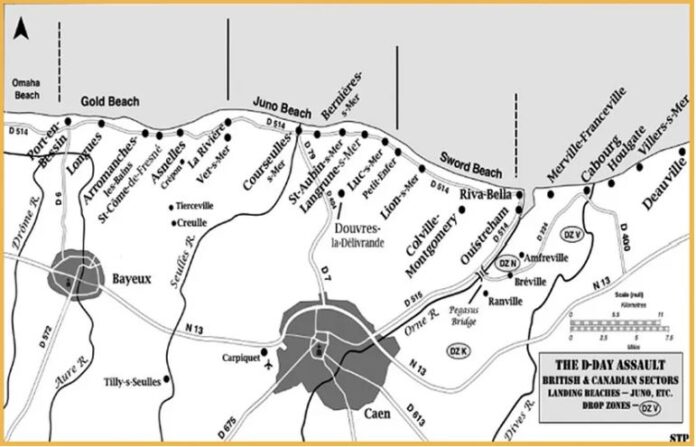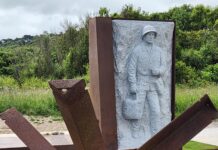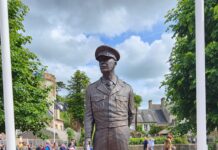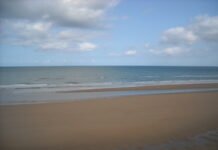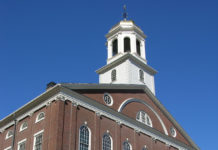On June 6, 1944, more than 150,000 soldiers from the United States and other allied nations invaded the coast of France to overthrow the Nazi regime.
As we commemorate the 80th anniversary of this historic event, questions still surround that day’s carnage, particularly at Omaha Beach.
U.S. Army commander Gen. Omar Bradley, who could only imagine the death and destruction on Omaha Beach that invasion morning from the deck of the cruiser Augusta, would later write that “every man who set foot on Omaha Beach that day was a hero.” It’s not hard to see why.
You may think that the opening scene from “Saving Private Ryan” was a bit overdone — it wasn’t. Casualties on Omaha Beach that day numbered some 2,000, with more than 1,000 killed.
During planning, the Americans were assigned the two western-most beaches, Utah and Omaha, mainly because they were already bivouacked in the English West Country. The British Commonwealth beaches, to the east, were designated Gold, Juno and Sword.
Of the five landing beaches, Omaha Beach was not going to be an easy task for the U.S. 1st and 29th infantry divisions. At high tide (and the spring tides in Normandy run to 18 feet) the waves lapped against a high, rocky bank composed of slippery, rounded stones that neither tracked nor wheeled vehicles could clamber up.
Map of the Invasion Beaches (Steve Powers)
Misconceptions About the Assault on Omaha Beach
Armchair generals have plenty to say about how the landings at Omaha Beach went down. They say there should not have been as many deaths because of naval and air bombardment, lack of tanks (although most of them sank prior to landing), no tough Marines to save the Army, etc.
Steve Powers and I, in our most recent book, “The D-Day Visitor’s Handbook: A Guide to the Normandy Landings and WW2 Paris,” dispel some of these misconceptions:
That there was adequate aerial bombing.
The allied heavy bombers that arrived over Omaha Beach, just before the landing craft, could not bomb accurately from 20,000 feet through the cloud cover by relying on radar equipped pathfinders. Even if the morning had been clear, the bombers would likely have failed to neutralize the defenses the Germans had thrown up to defend the beach exits.
No one, including Eisenhower and Montgomery seemed to realize that heavy bombers would be almost useless, maybe even dangerous, as close infantry support weapons. The 1,200 heavies (B-17s and B-24s) came in from the sea following, where possible, pathfinder planes using radar to penetrate the cloud cover below.
They released their 500 pound bombs from 20,000 feet a few seconds late for fear of hitting the troops now beginning to land on the beach below them. As a result, the German beach defenses were untouched, while Norman cow pastures further inland were hard hit.
National Guard Monument on German Bunker, Omaha Beach (Kevin Dennehy)
2. That all of the armies were successful.
None of the three Allied armies (American, Canadian, British) achieved their D-Day objectives, but all had penetrated the beach defenses and were being reinforced hourly.
3. That green German troops defended Omaha Beach.
There is the still unexplained failure on the part of Allied intelligence to detect the movement of units of the veteran German 352nd Infantry Division into positions behind Omaha Beach in May where it could reinforce the 716th Infantry Division.
4. That the British “funnies” tanks would have saved Americans at Omaha Beach.
Historians, many British, have written that that decision cost the Americans dearly on Omaha Beach, given the funnies successful deployment on British and Canadian beaches. But, Omaha Beach was different.
To have been effective, it would have been necessary to land them from tank landing craft directly on the exposed beach at low tide with the first infantry waves. The funnies, strange-looking vehicles with anti-mine flails, bridging equipment and flame-throwing capability, were the brainchild of British General Sir Percy Hobart. M-4 Sherman tanks, carrying a rotary beater attached to their prows, might have worked on Omaha if they had landed alongside infantry faced with minefields, but that fortunate conjunction would have been unusual given the confusion that morning.
5. That naval gunfire would neutralize German blockhouses and other defenses.
To preserve the element of surprise and to make visual spotting possible, the pre-WWI era battleships Texas (BB-35) and Arkansas (BB-33) with their supporting destroyers didn’t open fire until daylight, just before the first landing craft arrived on the beach. The preliminary naval bombardment was thus a short one.
The naval fire control teams that rode in with the first waves to help direct it suffered the same fate as the infantry — killed or wounded, radios inoperable and unable to move off the beach. Despite the ten-mile opening range for the battleships, scoring a direct hit on a casemate was more a matter of luck than skill.
For reasons that no one has explained other than falling back on the nasty sea state, the Landing Craft-Tank (R)’s spectacular rocket-barrage, fired minutes before H-Hour, mostly fell in the surf, well short of the beach defenses it was meant to help neutralize (a result, by the way, that the U.S. Navy has always disputed).
Destroyed Pillbox at Omaha Beach Museum (Kevin Dennehy)
6. That all American troops were untested on D-Day.
Many units DID have combat experience on D-Day. The U.S. 1st Infantry Division (the famous “Big Red One”) was a crack unit that had invaded North Africa and Sicily. The 82nd Airborne Division was an elite unit and a veteran of the Italian Campaign (Sicily, Salerno, Anzio). The 101st Airborne Division was well-trained, but were not in combat up to June 6, 1944. The 29th Infantry Division was a traditional National Guard unit that had been training for years, but with no prior combat experience. The 4th Infantry Division had not been in combat yet.
The British 3rd Infantry Division had fought in France and were evacuated at Dunkirk. The British 6th Airborne had no combat experience. The British 50th Northumbrian Division had fought in France and North Africa, including El Alamein, and Sicily. Other British units had fought in earlier World War II battles. The 3rd Canadian Infantry Division had not seen combat.
7. That U.S. Marines or British soldiers would have fared better at Omaha Beach.
You still hear questions from armchair generals asking whether the U.S. Marines or British forces would have done better at Omaha Beach. The answers are predictably biased. But that is like saying what if the Russians had beaten the U.S. to the moon? Speculation.
When the ramp of the Higgins boats went down and German machine guns and artillery started producing many casualties, it didn’t matter if you were a Brit or a Marine…a frontal assault is always devastating. In comparison, the Marines took fifteen hundred casualties landing on Tarawa Atoll a little over six months before, and that was seen as a major disaster.
That said, it is fun and interesting to think “what if” about Marines participating in Operation Dragoon (the invasion of Southern France) or fighting in the tough Italian campaign. They were truly amphibious warfare experts and battle-hardened warriors.
Steve Powers and I write about what if the Army had failed at Omaha Beach in The D-Day Visitor’s Handbook. We have stories about the battle and free trip planning on our website, Military History Traveler.



